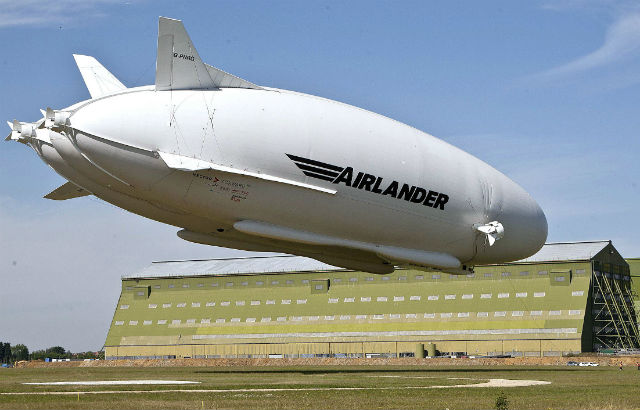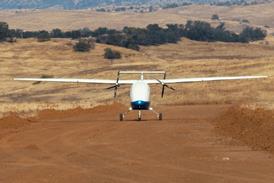The developer of the Airlander 10 hopes to return it to flight later this year after the large hybrid airship was damaged by a hard landing on 24 August. UK-based Hybrid Air Vehicles (HAV) says the accident, during its second sortie and in which neither pilot was hurt, caused superficial damage to the glass-fibre nose of the cockpit, which is currently being repaired at its Cardington hangar in Bedfordshire.
In a letter to shareholders on 5 September, HAV’s technical director Mike Durham described what happened at the end of the roughly 100min flight, during which the pilots had taken the aircraft to 3,000ft and executed a series of turns at air speeds up to 35kt (65km/h). After a successful first landing, an “issue with the mooring mast” prompted the commander to take-off again and circle the airfield while the mast was being repaired, he says.
During the second take-off, the 50m nose mooring line dropped free and trailed beneath the Airlander. The captain then decided to make a “higher than desired” approach to avoid the trailing line snagging on a fence or trees. While the line did hit a power line, Durham says this did not affect the hard landing.
The high approach resulted in the aircraft hovering 120ft above the ground, something that was “outside the normal operating envelope”. Although the pilot retained control of the aircraft during the descent, says Durham, the “nose dropped, resulting in a low speed impact” before the aircraft settled into a level condition on the ground. The crew shut down the engines and exited the aircraft, while the ground crew secured it to the mast.
Durham says that “once the formal investigation and repair programme have been completed”, the aircraft will recommence its flight test programme. This will entail the completion of about six flights, or 20h, during the first phase, before a second, 80h phase sees the aircraft being taken to 10,000ft and flown at 65kt. A final phase of up to 200h will introduce night flights and flights outside visual flight rules, and of a distance of more than 75nm (140km) from Cardington.
The company, which flew the Airlander for the first time on 17 August, remains “very encouraged by the capability of the aircraft demonstrated in its initial flight tests”. A target date for certification has not been set, but HAV expects to have completed most of the flight test schedule agreed with the European Aviation Safety Agency next year.

South Bedfordshire News Agency/REX/Shutterstock
The prototype Airlander 10 was originally built for a US military contract that was cancelled three years ago, with HAV buying back the rights to the design minus a series of US-designed avionics features covered by export restrictions. The company plans to construct a second example as the type certificated aircraft.
Source: FlightGlobal.com
















